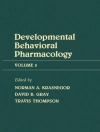Endometriosis is a chronic benign estrogen-dependent disease which is characterized by the presence of endometriotic glands and stroma outside the uterine cavity. It affects women during reproductive age, but it may also be diagnosed in menopausal women. Endometriosis can be asymptomatic; but most frequently it can be responsible for pain symptoms and/or infertility, severely impacting women‘ quality of life. Overall, clinical presentation depends on the location of endometriotic lesions: intestinal symptoms can occur in case of bowel nodules whereas urinary symptoms can occur in case of urinary tract endometriosis. At the moment, the exact prevalence of endometriosis is unknown because its definitive diagnosis requires surgery and histological evaluation. It has been estimated that this benign chronic disease affects at least 3.6% of reproductive age women; however, its prevalence could significantly increase considering women suffering from dysmenorrhea, chronic pelvic pain and/or infertility. The etiology of endometriosis is unclear: various factors, such as multiple abnormalities of the immune system, genetic factors and environmental factors may influence women‘ susceptibility to develop this chronic disease. Although the gold standard for the diagnosis of endometriosis is the pathological evaluation of surgical biopsies or specimens, today transvaginal ultrasonography is largely employed to reliably identify the presence of deep infiltrating endometriosis or ovarian endometriomas. The aim of the surgery for endometriosis is to restore the normal anatomy by removing endometriotic lesions and by performing adequate removal of abdominal adhesions. However, surgery, in case of deep infiltrating implants, can be rather challenging for gynecologists due to the complexity of pelvic adhesions involving several structures and it may be characterized by rare but not negligible urological, intestinal, neurological and vascular complications. Furthermore, pain may recur after conservative surgery for endometriosis. Although surgery is obviously required in cases of ureteral stenosis, bowel occlusion or ovarian cysts with doubtful characteristics of malignancy, medical therapy, and, particularly, hormonal therapies, are the initial therapeutic approach today for most patients with endometriosis-related pain. Long-term medical therapy for endometriosis aims to minimize the production and action of estradiol, inhibiting the production of cyclic hormones from the ovaries. Numerous medical options (such as estroprogestins, progestins, gonadotropin- releasing hormones analogs and antagonists) are available for treating women with endometriosis: the choice of the most suitable compound is based on several factors, such as intensity of pain, age, desire to conceive, costs, route of administration and impact of the endometriosis on work capacity, sexual function and quality of life of each woman. Currently, research is focused on finding new innovative targets to treat this benign chronic disease; in fact, it is well known that development, maintenance and progression of endometriosis depend on a variety of aberrant mechanisms including cell proliferation, immune function, apoptosis, invasion capacity and angiogenesis. The aim of this book is to give an accurate overview on pathogenesis, diagnosis and therapy of endometriosis.
Simone Ferrero
Endometriosis: From Diagnosis to Treatment [PDF ebook]
Endometriosis: From Diagnosis to Treatment [PDF ebook]
Dieses Ebook kaufen – und ein weitere GRATIS erhalten!
Sprache Englisch ● Format PDF ● Seiten 339 ● ISBN 9781536177473 ● Herausgeber Simone Ferrero ● Verlag Nova Science Publishers, Inc. ● Erscheinungsjahr 2020 ● herunterladbar 3 mal ● Währung EUR ● ID 8061990 ● Kopierschutz Adobe DRM
erfordert DRM-fähige Lesetechnologie












